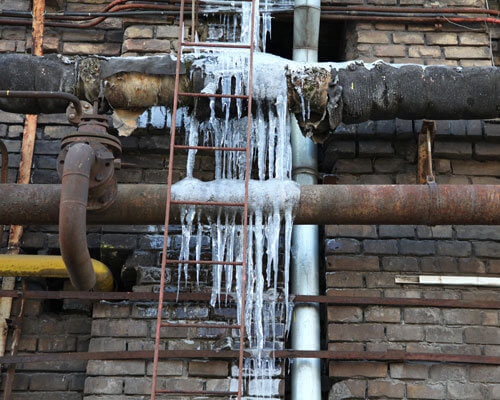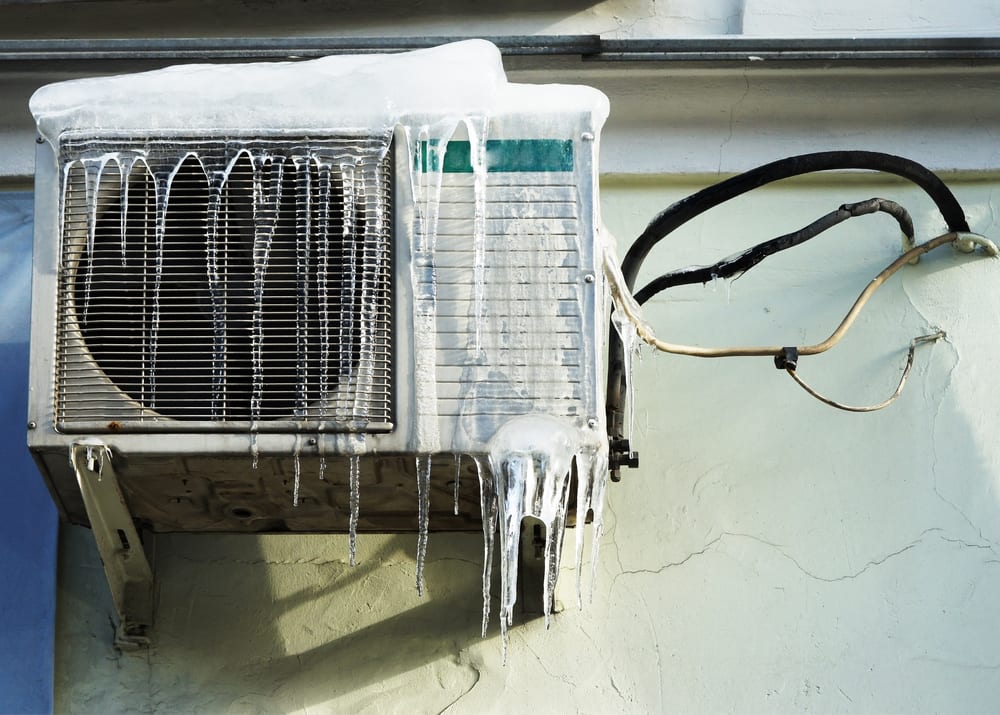Managing a Frozen AC Pipe: Proven Techniques
Managing a Frozen AC Pipe: Proven Techniques
Blog Article
The content following next relating to Have a Frozen AC Line? Here’s How to Fix It is exceedingly engaging. Don't skip it.

Introduction
Discovering that your air conditioning pipeline is iced up can be worrying, specifically throughout warm summer months when you rely on your a/c unit one of the most. Recognizing what to do in such a situation is crucial to avoid more damage to your cooling system and guarantee your convenience inside.
Understanding the Causes
Several variables can contribute to the cold of an air conditioner pipeline. Understanding these reasons can assist you address the concern successfully.
Lack of Airflow
One usual root cause of a frozen air conditioner pipe is inadequate air movement. When the air flow over the evaporator coil is limited, it can trigger the coil to go down below freezing temperature, causing ice development on the pipe.
Reduced Refrigerant Levels
Not enough refrigerant degrees in your air conditioner system can also lead to an icy pipeline. Reduced refrigerant levels can trigger the stress in the system to go down, leading to the freezing of moisture on the evaporator coil.
Cold Weather Conditions
In chillier environments, freezing temperature levels outside can add to the cold of a/c pipelines. If your a/c device is not effectively shielded or if there are leakages in the ductwork, chilly air can infiltrate the system, causing the pipe to ice up.
Dirty Air Filters
Unclean or blocked air filters can limit airflow in your air conditioning system, bring about various problems, consisting of an icy pipe. It's important to change or cleanse your air filterings system on a regular basis to make certain correct air flow and protect against ice accumulation.
Indications of a Frozen AC Pipe
Acknowledging the signs of an icy air conditioner pipe is essential for prompt activity.
Decreased Airflow
If you notice a significant decline in airflow from your vents, it might suggest a frozen pipeline.
Ice Buildup on the Pipe
Visible ice build-up on the cooling agent line or the evaporator coil is a clear indication of an icy a/c pipe.
Strange Sounds from the Unit
Uncommon noises, such as hissing or bubbling, originating from your air conditioning unit can signify that there's ice present on the pipeline.
Immediate Actions to Take
When faced with an icy air conditioning pipeline, it's important to act rapidly to stop further damages to your cooling system.
Shutting off the air conditioner
The primary step is to switch off your ac unit to prevent the system from running and worsening the concern.
Checking for Blockages
Examine the area around the interior device for any kind of obstructions that may be blocking air flow, such as furniture or curtains.
Thawing the Pipe
You can utilize mild techniques like positioning towels taken in cozy water around the icy pipeline to assist thaw it gradually.
Safety nets
Taking preventive measures can assist prevent future occurrences of a frozen AC pipeline.
When DIY Methods Fail
If your efforts to thaw the pipe or address other issues are not successful, it's time to contact a professional.
Value of Hiring a Professional HVAC Technician
A licensed HVAC technician has the know-how and tools necessary to identify and fix problems with your air conditioner system safely and efficiently.
Normal Maintenance Checks
Set up routine maintenance contact an expert HVAC professional to make sure that your AC system is running successfully.
Altering Air Filters
On a regular basis replace or cleanse your air filters to stop air movement restrictions and maintain ideal efficiency.
Protecting Exposed Pipes
If your air conditioner pipelines are exposed to cold temperatures, think about protecting them to stop cold throughout cold weather.
Looking For Professional Help
If DIY approaches fall short to settle the concern or if you're unclear concerning just how to continue, it's finest to seek assistance from a qualified HVAC professional.
Verdict
Taking care of a frozen air conditioning pipeline can be a frustrating experience, yet understanding how to react can assist reduce damages and bring back comfort to your home. By recognizing the causes, identifying the indications, and taking prompt action, you can effectively attend to the issue and stop future occurrences.
G UP? HOW TO FIX IT?
It happens all over America. And the rest of the world probably. It’s the hottest day ever and for some darn reason your AC isn’t cooling the house. You fiddle with the thermostat to try and fix the problem. Nada. All you can do now is go outside and check the AC unit. You make your way there and find your air conditioner unit is frozen! But how?
In this post we’ll cover how you can tell that your air conditioner has frozen (other than the obvious reasons), what could have caused the freeze, and some of the things you can do about your AC freezing up. And if you have a frozen heat pump condenser, read our blog about it to learn what to do! But remember, it is always best to avoid your AC freezing up with an AC tune up. And if you are moving into a home, it's critical to get HVAC inspection so that you are aware of an AC problems before you move in.
Keep reading and you may be able to fix the frozen AC yourself. If you can’t, call an HVAC specialist. If you live in Maryland, call SuperTech HVAC for AC repair. We’ll take care of it.
How Does An Air Conditioning Unit Work?
How you probably imagine an AC works is wrong. Contrary to popular belief, an AC system does not inject cool air into a building. Instead, it removes the heat from inside and transfers it outside. Cool huh? (Pun intended).There are 4 major components among the 3 stations of an air conditioning system: the evaporator coil, the compressor, the condenser, and the refrigerant – a special chemical that links everything together through a closed loop system.
Station 1:
Warm indoor air is sucked into the return vent, through a filter, and blows over the evaporator coil. The heat is absorbed into the cold refrigerant, turning it from liquid to gas. The air, which is now cool, is blown back into the home to areas that your thermostat, i.e. you, has decided.
Station 2:
The refrigerant makes its way outside the house to the compressor, which squeezes the warm refrigerant, raising its gaseous temperature even more.
Station 3:
When the super hot vapor refrigerant reaches the condenser, the last step, the heat is expelled and absorbed into the outdoor air. The refrigerant instantly cools, which changes it from gas back to liquid form. The cold liquid refrigerant is now ready to return to station 1 and repeat the process.
Is Your AC Freezing Up? Here Are The Signs:
As you may have guessed, your air conditioner unit freezing up on a hot day is not normal.
If this happens, there's no need to panic. Often the issue can be solved with a little troubleshooting. If the AC unit is left frozen for too long however, you may find yourself with a bigger problem.
First things first, how do you know your AC is frozen?
Well, the obvious sign is the ice on your refrigerant line-set pipe. Simply check between your outdoor AC unit and your home's exterior wall to see whether your AC line frozen.
You might also have a frozen evaporator coil. This one's not as easy to check. You'll need to open a panel on the indoor unit to inspect. Don't do this unless you're handy. If you aren't, call an HVAC pro like SuperTech HVAC or you may damage something in the process.

Do you really like reading up on Have a Frozen AC Line? Here’s How to Fix It? Make a remark down the page. We will be pleased to hear your thoughts about this blog. Hoping that you come back again later on. Sharing is nice. You never know, you may very well be helping someone out. Thank you so much for your time invested reading it.
Click On This Link Report this page